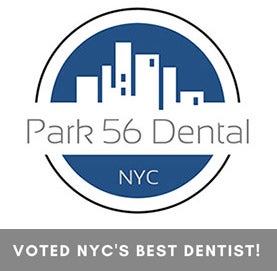-
What is a Dead Tooth?

You may not think of your teeth as being alive, but they are. The outer shell, called the enamel, is the hardest substance in the human body. However, the nerves and blood vessels at the heart of your teeth are soft and vulnerable. If this inner layer (known as the pulp) becomes damaged, blood may stop flowing. A tooth with no blood flow is called a “dead” tooth. Without treatment, this tooth may become infected or abscessed and will eventually fall out.
What Causes a Dead Tooth?
Trauma or injury is a common reason for a tooth to die. Falling or being hit in the mouth can cut off the blood supply to a tooth or even cause blood vessels to burst. With no blood flow, the nerve inside the pulp dies.
Tooth decay is another possible cause. Without consistent dental hygiene habits, cavities can start to form. Left untreated, decay slowly eats through the tooth toward the sensitive pulp, eventually causing an infection. Inflammation may cut off blood flow to the pulp, causing the tooth to die.
How to Spot a Dead Tooth
It isn’t always easy to identify a dead tooth. Only a dental professional can pinpoint signs of restricted blood flow and a dying tooth in its early stages, which is why regular dentist visits are so important. Before long, though, the problem will soon become apparent.
Pain is the first symptom to watch out for. This may seem odd because the nerve inside your tooth is dead, but that’s not where the pain comes from. Bacteria and dead nerve remnants touching the extremely sensitive nerve endings around your tooth, called the periodontal membrane, are the source of your pain.
A change in color comes next. Dead teeth often darken over time as red blood cells die. This is very similar to developing a bruise. If a single tooth in your mouth gradually becomes yellow, gray, or black, visit the dentist right away.
Signs of infection could also appear if the dead tooth doesn’t receive treatment. You may notice swelling, a bad taste in your mouth, or an inflamed sore on your gums.
Treatment for a Dead Tooth
A root canal is the first option. Dentists want to avoid removing teeth whenever possible, and this procedure could save a dead or dying tooth. It involves removing all signs of decay and infection from deep within the tooth. Then, the dentist fills and seals it. In many cases, a crown is needed following a root canal.
Tooth extraction is the next choice. Even if your dentist can’t save your tooth, prompt treatment is necessary to avoid other complications. Once removed, you have several options for replacing the missing tooth, including an implant, bridge, or partial denture.
Park 56 Dental offers tooth care and smile restorations out of our spa-like, patient-centered New York dentist office. If you notice signs of a dead tooth, please contact us online or call us at (212) 826-2322 to schedule an appointment.
-
What is a Dental Bridge?
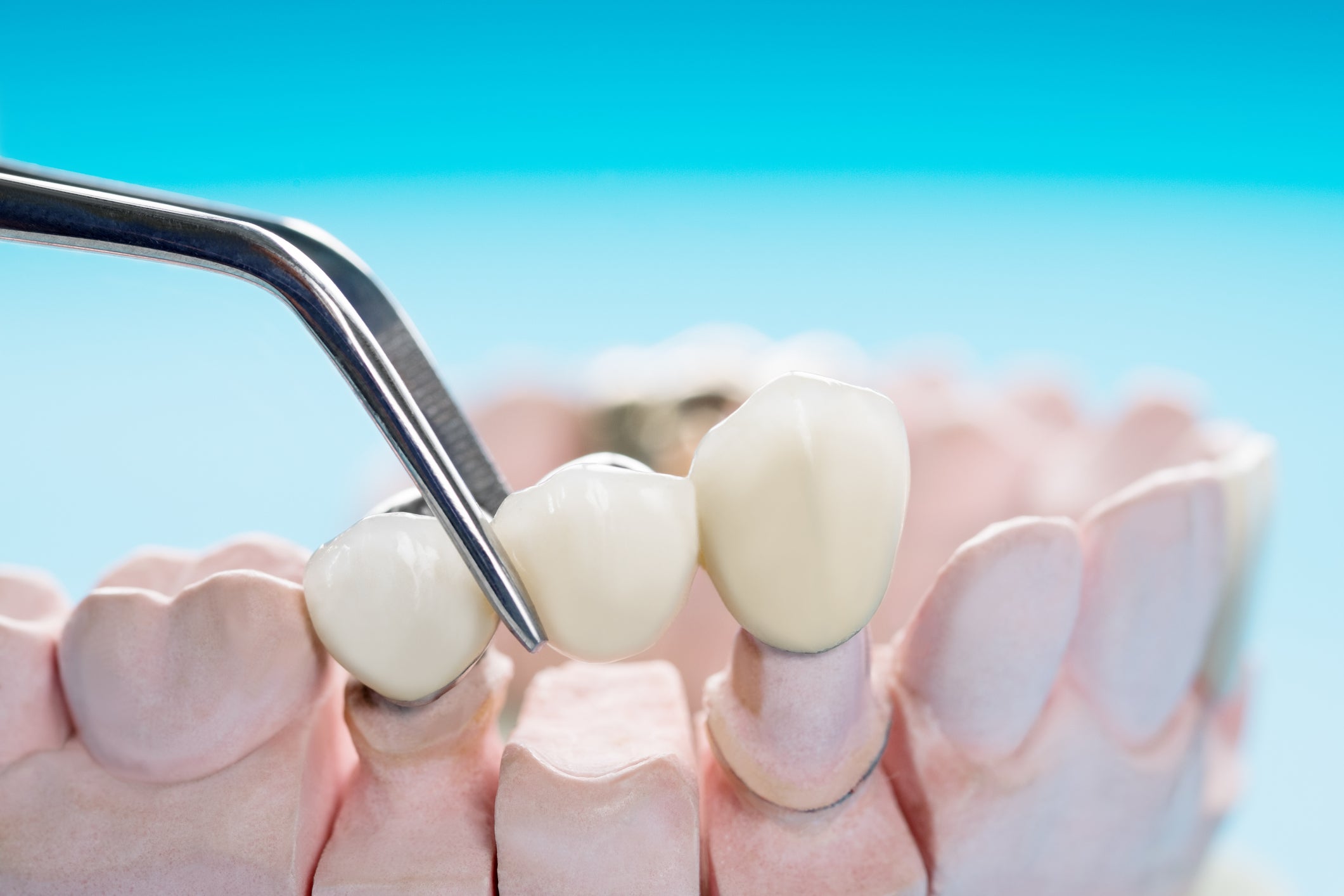
There are several options for replacing missing teeth, including dental bridges. Closing the gap in your smile can help prevent problems with your existing teeth and gums, including driting, bone loss, difficulty chewing, or speech problems. Learn more about dental bridges to help you decide if this is the right restorative treatment for you.
What is a Dental Bridge?
Dental bridges literally “bridge the gap” left by one or more missing teeth. A bridge is comprised of multiple parts:
- Crowns cap the teeth on either side of the gap, known as the abutment teeth.
- One or more false teeth, called pontics, are suspended between the crowns to replace the missing tooth or teeth.
- Crowns and pontics may be made of porcelain, alloys, gold, or other materials.
What is the Process of Receiving a Dental Bridge?
Your first visit with the dentist involves preparing the abutment teeth by removing some of the enamel. This creates room to place crowns, which serve as anchors for the pontic cemented between them.
During the same visit, your dentist takes an impression of your teeth to use as a model when creating custom pontics and crowns for your dental bridge. A temporary bridge protects your exposed teeth and gums until the permanent product is finished.
At your second appointment, the dentist removes the temporary bridge and puts the new pontic and crowns in place. Temporary cement ensures a comfortable fit. After a few weeks, you return to the dentist one final time to have the bridge firmly cemented in place.
Factors to Consider
When comparing bridges with other tooth-replacement options, keep these factors in mind:
- Time: You can complete the dental bridge process in two or three visits spaced within a few weeks of each other.
- Cost: While your insurance coverage determines what you pay out of pocket, bridges tend to be a middle-of-the-road option, with dentures costing less and implants costing more.
- Longevity: With excellent oral hygiene and regular checkups, dental bridges can last up to 15 years.
- Aesthetics: Pontics aren’t embedded in the gum line, so it may be possible to distinguish them from your natural teeth upon close inspection. For this reason, bridges often replace teeth toward the back of the mouth.
- Comfort: Bridges are not removable, so there’s no risk of slipping, which may exist with some types of dentures.
- Oral care: Whether you have a dental bridge or not, you should brush twice a day and floss once a day. If you have a bridge, your dentist may also recommend using antiseptic mouthwash and a special flossing tool to clean out debris from under the pontic.
Park 56 Dental is pleased to offer bridges and other smile restoration options to meet your diverse needs. We operate out of our spa-like, patient-centered New York office that makes going to the dentist a pleasure. Contact us online or call us at (212) 826-2322 to schedule a consultation for dental bridges in NYC today.
-
Tips to Reduce Dental Anxiety

Are you among the millions of Americans who avoid the dentist out of fear and anxiety? You might be nervous about feeling pain, being rushed to make a decision, incurring high costs, or having your concerns neglected. You might be especially prone to dental anxiety if you had a negative experience in the past.
Ironically, skipping routine cleanings could lead to oral health problems, resulting in more costly, in-depth treatment later on. Here are the top tips for reducing dental anxiety so you can take care of your smile without fear.
- Speak up: Tell your dentist about feeling anxious. It may be possible to adapt your treatment to make it more pleasant for you.
- Use hand signals: Inform your dentist that you will signal with your hands to communicate your needs. This gives you the right to raise your hand if you feel uncomfortable at any time. It’s perfectly acceptable to ask your dentist to ease off or pause the procedure.
- Focus on your breathing: If you’re nervous, you may involuntarily hold your breath. The resulting decrease in oxygen can make your anxiety worse. Close your eyes and focus on slow, regular breaths during your dental procedure.
- Listen to music: It can be helpful to shut out the world with a pair of headphones. Play your favorite album or listen to soothing songs to reduce your tension.
- Avoid caffeine and sugar before the appointment: These substances might make you even more jittery, so opt for a high-protein meal instead, which has a calming effect.
- Set a low-stress appointment time: Don’t schedule your dental visit at a time when you will feel rushed or under pressure. This might mean taking the day off work or setting a Saturday appointment so you can take your time without fear of running late.
- Try a new dentist: If your previous provider wasn’t sensitive to your needs, it might be time to find a different dentist. Ask friends and neighbors for recommendations to increase your confidence.
- Ask about sedation dentistry: Dental sedation is the best way to reduce stress for people who struggle with anxiety at the dentist. You don’t lose consciousness, but you become so relaxed that you feel completely at ease with the experience. Some patients even fall asleep in the dentist’s chair! Depending on the level of sedation you receive, you may also not remember the procedure afterward.
Park 56 Dental is pleased to help our patients overcome their fear of the dentist in our spa-like, patient-centered New York dentist office. We offer different levels of sedation to meet your needs, from inhaling nitrous oxide (laughing gas) to swallowing a pill to receiving conscious IV sedation with help from our board-certified anesthesiologist.
When you leave our office, you’ll feel so pampered—you won’t believe you once dreaded trips to the dentist! Contact us online or call us at (212) 826-2322 to learn more about our sedation dentistry options.
-
Why our Teeth Shift or Become Crooked
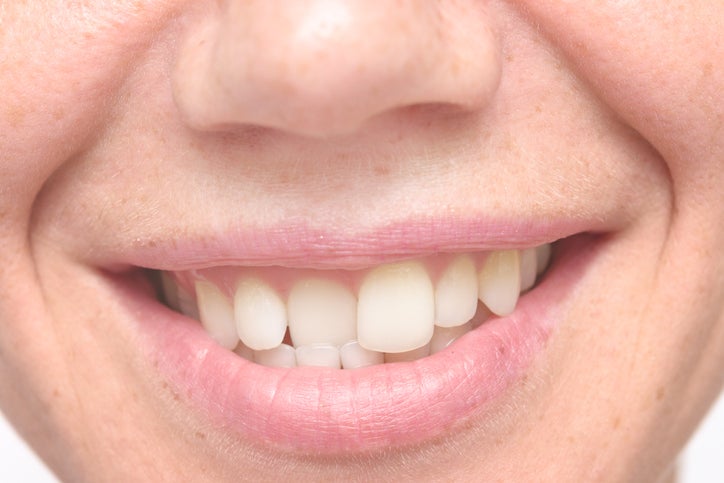
Have you noticed a shift in your bite? You might think that your teeth are firmly attached, but it’s actually very common for them to shift, becoming crooked or misaligned. What causes teeth to move around in your head? And what should you do about it?
- Sometimes baby teeth become crooked. It doesn’t necessarily mean the permanent teeth will be crooked, but in some situations it does. Baby teeth may just be crooked because they’re too small for the available gum space. If a child sucks a thumb or pacifier for too long, the baby teeth may become crooked, and if there is trauma to the mouth or tooth decay that causes a baby tooth to fall out prematurely, the permanent teeth may grow in crooked. If the baby teeth are crowded, the permanent teeth probably will be too. Genetics and heredity play a role, and poor dental habits and poor nutrition are sometimes the problem.
- Your jaw size may be to blame. Some scientists believe that our teeth often become overcrowded because our jaws have evolved to be smaller than they used to be. Interestingly, the lower jaw grows forward continually, throughout a person’s lifetime. This can cause the lower front teeth to bump into the upper front teeth, which either makes the top teeth spread out or the bottom teeth become crowded. On the other hand, the width of your lower jaw diminishes over the years, which also contributes to crowding of the lower teeth.
- Teeth can lose enamel and change shape. Whether it’s because of an injury or acid erosion, sometimes enamel is lost from your teeth, changing their shape. This can cause them to move out of alignment. Grinding the teeth, a condition called bruxism, can change the shape of the teeth as well.
- As you age, your teeth may shift. Aging causes bones, ligaments, and muscles to grow weaker. What’s more, the constant pressure of moving against each other can wear teeth down, causing them to shift and crowd.
Sometimes, there’s no reason to do anything about teeth that have shifted. Your quirky, crooked smile may just be part of who you are, and there’s nothing wrong with that. There are some factors, though, that would make it a good idea to move your teeth back where they belong. If it’s hard to chew, to speak, or to keep your teeth clean, or your crooked teeth are diminishing your confidence, there are many options available for straightening them.
At Park 56 Dental Group, we provide personalized, quality dental care in a spa-like environment. We offer pediatric, prosthodontics, endodontics, oral surgery, Invisalign®, emergency, and sedation dentistry, all at the highest level of treatment. We serve the Midtown, Central Park, Upper East Side, Park Avenue, and all surrounding Manhattan and New York areas, in a patient-centered practice with hours to fit your schedule. Schedule your complimentary consultation today by contacting us online or calling us at (212) 826-2322.
-
The Importance of Having your Cavities Filled

Even if you brush and floss religiously, doing your best to have pristine teeth and perfect oral health, you’re likely to one day have a cavity. If this happens, don’t delay treatment. It’s important to get any cavities filled as soon as possible, for many reasons.
- Tooth decay, left to its own devices, will spread. If you ignore a cavity, the decay will soon spread to the area around the cavity. Then you’ll not only have a bigger cavity than you originally had, but you may also have additional cavities as well. Getting it filled will solve the problem and keep the damage from spreading.
- Bacteria from a cavity is unlikely to stay in your mouth. An unhealthy tooth won’t just affect nearby teeth: it will spread bacteria as far as it can. Bacteria in your mouth is not ideal, but once it gets into your bloodstream and makes its way to other parts of the body, it can be extremely dangerous.
- Fillings keep your smile intact. If you don’t get a cavity filled in a timely manner, you may end up having to have the tooth removed entirely. Dental implants can solve the problem of missing teeth, but they’re much more expensive than fillings and require a much more complicated process. You’ll have a hole in your smile until you can get the implant, and this can compromise the bone in your jaw.
Those are pretty compelling reasons to get your cavities filled, but did you know there are different types of fillings? Each material used in fillings has its pros and cons, and your dentist will be able to help you determine which is right for you.
- Amalgam fillings have been around for over a century. They’re strong and ideal for cavities in the molars, because they can take the impact of chewing. Made of a combination of several metallic elements, they are sometimes visible when you laugh or smile, but they’re some of the least expensive cavity-filling materials.
- The other most common filling material is composite fillings. Sometimes called composite or filled resins, they’re made of a combination of glass or quartz filler. They can be made to match the color of your tooth, and they’re good in areas involved in moderate chewing.
- Metals, ceramic, and glass ionomer are also used as fillings. Gold and silver are often used, and these metallic fillings can last 10-15 years. Ceramic or porcelain fillings are attractive but expensive, and glass ionomer fillings can release fluoride to protect teeth but are less durable than other fillings.
At Park 56 Dental Group, we provide personalized, quality dental care, offering pediatric, prosthodontics, endodontics, oral surgery, Invisalign®, emergency, and sedation. We serve the Midtown, Central Park, Upper East Side, Park Avenue, and all surrounding Manhattan and New York areas, in a patient-centered practice with hours to fit your schedule. Schedule your complimentary consultation by contacting us online or calling (212) 826-2322.
-
The Relationship Between Sleep Apnea and Your Teeth

If your dentist were to ask you about your sleep, would that surprise you? In fact, dentists are often the earliest diagnosticians of sleep disorders. What is the connection between oral health and sleep disturbances?
According to the National Sleep Foundation, about 18 million Americans have sleep apnea. This condition involves pauses in breathing throughout the night, lasting from a few seconds to minutes, and sometimes occurring 30 or more times each hour. They happen because of airway obstructions caused by a too-large tongue, flaccid throat muscles, or a too-small jaw. But what does this have to do with your teeth?
Often, the first sign of sleep apnea is bruxism, or tooth grinding. When a dentist notices worn tooth surfaces, this is an indication that the patient suffers from bruxism. Grinding the teeth can cause tooth breakage, and sometimes a spike in cavities because of the damage.
Sleep apnea can be dangerous. It diminishes sleep quality because gasping for breath causes people to wake up throughout the night. What’s more, sleep apnea is linked to high blood pressure, heart disease, diabetes, and obesity. It can also contribute to periodontal disease.
You might notice some of the signs of sleep apnea yourself. These include chronic snoring, daytime drowsiness, morning headaches, or waking up with a dry mouth or sore throat. Bruxism can manifest in tired, tight jaw muscles or sensitive teeth. If any of these symptoms seem familiar, talk to your dentist about sleep apnea
If your dentist thinks you have sleep apnea, he or she may recommend a sleep study. Once a diagnosis is confirmed, there are solutions for sleep apnea. You benefit from lifestyle changes like losing weight and quitting smoking, or you might need a custom mouthguard. If your sleep apnea is moderate to severe, you might need a CPAP, or continuous positive airway pressure device. This is a mask that fits over your nose when you’re sleeping and uses air pressure to keep your airway passages open. You might also benefit from a custom Often, when the apnea is resolved, the bruxism stops entirely.
At Park 56 Dental Group, we want to deliver the most effective sleep disorder treatment in NYC. Our founding senior partner, Dr. Philip S. Abramsky, specializes in sleep disorders, and he will work to determine which treatment is right for you. Through a series of examination, he’ll diagnose the cause of your sleep disorder, in order to recommend the proper treatment. It’s all part of our commitment to offering personalized, quality dental care in a spa-like environment. We offer pediatric, prosthodontics, endodontics, oral surgery, Invisalign®, emergency, and sedation dentistry, all at the highest level of treatment. We serve the Midtown, Central Park, Upper East Side, Park Avenue, and all surrounding Manhattan and New York areas, with a patient-centered practice that has hours to fit your schedule. Schedule your complimentary consultation today by contacting us online or calling us at (212) 826-2322.
-
What Do I Do If My Crown Comes Off?
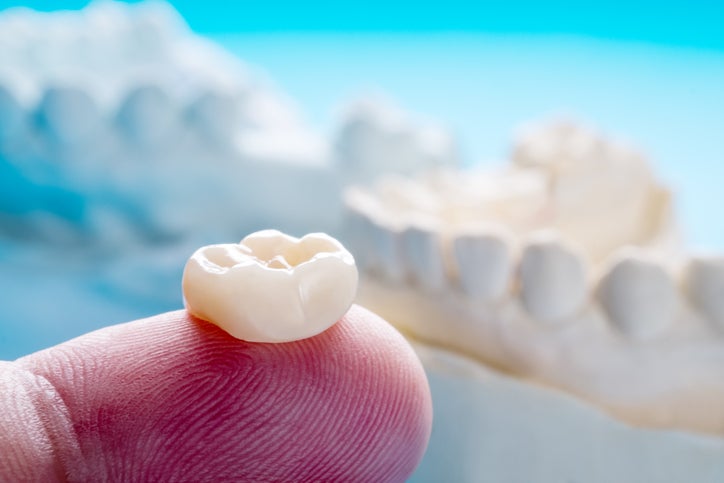
Many Americans have one or more dental crowns. This restorative dentistry option gives you back your smile after a tooth has been damaged by decay or traumatic injury. While crowns are meant to be permanent additions to your mouth—either cemented on top of a natural tooth or screwed into a receiving hole on a dental implant—they do sometimes come loose. Here’s what you should do if your crown falls off.
Retrieve the Dental Crown
Once you realize your dental crown is missing, act quickly to resolve the issue. First, locate the crown. If it’s still in your mouth, take it out. If it fell on the ground, try to find it. If you swallowed the crown, don’t panic—you will simply need to be fitted with a new one.
Inspect & Clean the Crown
Assuming you have located it, rinse off the crown with warm water and examine the interior side closely. If the crown looks completely hollow or has a small metal rod emerging from it, you might be able to temporarily place it back in your mouth before visiting the dentist for a more permanent solution.
However, if you see part of your tooth stuck within the crown, this means it didn’t lose adhesion—rather, your tooth has deteriorated further and broken off. In this case, you should not attempt to place the crown back in your mouth. Instead, put it in a safe place, such as a small container or plastic bag, until you can meet with your dentist.
Protect Your Tooth
Crowns are intended to shield the underlying structures of a damaged tooth. This means nerves and other sensitive tissues may now be exposed, causing sensitivity to touch and temperature. You may be able to find dental cement at a pharmacy to temporarily replace the crown until you can visit the dentist. Even if you lost the crown or can’t reattach it, you can protect the exposed tooth by molding dental cement or wax around it.
Then, be careful about what you eat. To avoid potentially dislodging the crown again, avoid crunchy, chewy, or tough foods. Steer clear of hot and cold foods as well if they cause you pain. Limit yourself to things like applesauce, pudding, and room-temperature soup until you have a more permanent solution.
Call Your Dentist
Let your dentist know about your emergency without delay. Explain what happened, and make an appointment to repair your tooth immediately —on the same day, if possible. Trust your dentist to pursue the best course of action, which may include putting in a filling, reattaching the old crown, or making a new one.
If your crown has come off, or you have another dental emergency, please contact Park 56 Dental at (212) 826-2322 to request a same-day appointment with our NYC dentist. Rest assured that we’re following all recommended safety precautions from the CDC to keep our patients safe during the COVID-19 outbreak.
-
How to Reduce Dental Pain from a Broken Tooth

A broken tooth can happen in an instant. All it takes is a forceful impact to the face or biting down wrong on a cavity or filling. Whatever the cause may be, you need an emergency dentist visit to set things right. Give us a call at (212) 826-2322 immediately to schedule a same-day appointment with our NYC dentist. In the meantime, reduce the pain from your broken tooth with these tips.
- Take anti-inflammatory medicine: Controlling inflammation is critical for reducing pain from a broken tooth. Over-the-counter anti-inflammatories—such as ibuprofen, acetaminophen, or naproxen—provide temporary pain relief. Just remember that these medicines do nothing to address the underlying issue, so you still need to visit a dentist as soon as possible.
- Rinse with salt water: Salt is an antiseptic and anti-inflammatory, making it the perfect substance for a natural mouth rinse. Pour a cup of warm water into a glass and stir in 1/2 teaspoon of salt. Swish the rinse around in your mouth for 10 to 15 seconds, and then spit it out. Repeat this process four to five times a day until you can visit a dentist.
- Apply a cold compress: Cold temperatures make blood vessels constrict, numbing the pain and reducing the swelling from a broken tooth. Wrap a bag of ice or frozen peas with a towel and place it on your cheek for 20 minutes at a time. Repeat every few hours.
- Chew on garlic: The anti-bacterial and pain-relieving properties of garlic make it an effective remedy for toothaches. Crush a clove of garlic into a paste, add a dash of salt for good measure, and spread it on your broken tooth.
- Numb the pain with peppermint tea: Brew a cup of peppermint tea and add ice to cool it down. Then, swish the tea around in your mouth. You can also freeze the used tea bag for a few minutes and place it directly on your aching tooth.
- Apply clove oil: Clove essential oil contains eugenol, a natural antiseptic that numbs pain and reduces inflammation. Moisten a cotton swab with clove oil and then add a drop or two of olive oil to dilute it slightly. Rub the swab on the affected area a few times throughout the day. Alternatively, you can concoct an antiseptic mouthwash with 1/2 cup water and a drop of clove oil.
- Apply vanilla extract: The antioxidant properties of vanilla extract make it an effective healing agent. It also contains alcohol, which numbs the pain. Moisten a cotton swab with vanilla extract and apply it to the affected area a few times daily.
If you have a broken tooth or other dental emergency, contact Park 56 Dental at (212) 826-2322 to request a same-day appointment. Save the broken-off part of your tooth, if possible, so we can attempt to repair it. Rest assured that we’re following all recommended safety precautions from the CDC to keep our patients safe during the COVID-19 outbreak.
-
What Constitutes a Dental Emergency?

As part of the effort to curb the spread of COVID-19, the American Dental Association (ADA) has provided dentists and patients with guidance on what to consider a dental emergency during the pandemic outbreak. This is a follow-up to the recommendation that patients should postpone elective procedures for the time being.
Here are some examples of what constitutes a dental emergency. If you are experiencing any of these problems, please call Park 56 Dental at (212) 826-2322. We would be happy to assist you and schedule a same-day appointment to have your emergency treated.
Knocked-Out Tooth
If you lose a tooth after getting hit in the face, gently place the tooth back in its socket, being careful to handle it as little as possible. Bite down slightly on moistened gauze to help hold the dislodged tooth in position.
If you can’t get the tooth back in your mouth, place it in a small container of milk or saliva (not water) to keep it moist. Then, call your dentist immediately. The faster you act, the better chance you have of saving the knocked-out tooth.
Loose Permanent Tooth
A wiggly permanent tooth is considered a dental emergency, even if there’s no pain. Hold the tooth in its proper position, and then bite down gently to keep it from moving. You can prevent the tooth from falling out entirely, but you must see a dentist as soon as possible.
Chipped, Cracked, or Broken Tooth
If a tiny corner of your tooth chips off, and you feel no pain, this usually doesn’t constitute a dental emergency. Simply be careful not to let any sharp edges of the tooth cut your lips, cheeks, or tongue
However, if you have a badly chipped, cracked, or broken tooth, this is a serious cause for concern. You may be in severe pain, so call your dentist immediately for an emergency appointment. In the meantime, dull the pain and reduce inflammation with a cold compress to your cheek. Taking anti-inflammatory medicine, such as ibuprofen, acetaminophen, or naproxen, may help as well. You can also rinse your mouth with saltwater for antiseptic benefits.
Soft Tissue Injury & Resulting Pain
Puncture wounds, cuts, or tears to the cheeks, lips, or tongue are examples of soft tissue injuries that can cause pain and bleeding. Clean the area with warm water, and staunch the flow of blood with a soft cloth or gauze pad if available. Then, set up an emergency appointment with your dentist.
Other Dental Emergencies
In short, you should call your dentist immediately if you have any of these symptoms:
- Uncontrolled bleeding
- Severe pain
- Swelling or trauma to facial bones that potentially compromises your airway
- Bulging, swollen, or knotted gums
If you have a dental emergency, contact Park 56 Dental at (212) 826-2322 to request a same-day appointment with our NYC dentist. Rest assured that we’re following all recommended safety precautions from the CDC to keep our patients safe during the COVID-19 outbreak.
-
What is a Root Canal and What are the Signs that you Need One
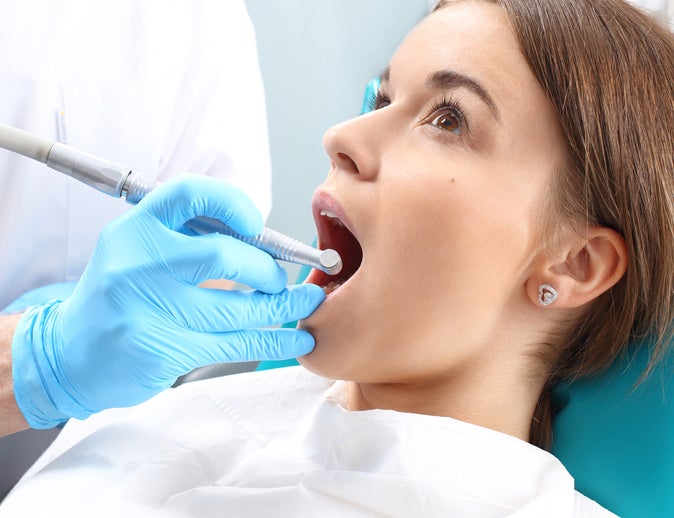
You’ve probably heard of a root canal, because they’re referenced when people are talking about something difficult or painful, and they pop up in dental jokes. Do you know what the term means? While you may be under the impression that a root canal is a form of torture, it is actually a special procedure that’s relatively simple and can often save a tooth.
The term “root canal” actually means two things. It may refer to the part of the tooth between the pulp and the roots. More commonly, it’s a reference to the dental procedure used to relieve root canal pain by removing infected material. Nerves and blood vessels are contained in the root canals of teeth, and by removing a nerve in an infected tooth, a dentist can eliminate pain caused by infection or decay in the pulp. While many people assume that the root canal procedure is painful, it’s rarely more painful than a filling. The time leading up to the root canal, however, can cause a great deal of pain, stemming from several different causes.
- Tooth decay penetrating the teeth can cause root canal pain.
- Cracks or chips that damage the teeth can also be painful.
- Disease in your mouth may cause decay or infection, compelling your dentist to recommend a root canal.
If you are experiencing extreme tooth pain when you eat, or sensitivity to hot and cold that lingers after you’ve removed whatever was hot or cold, you may need a root canal. Other signs that a root canal may be required include a small, pimple-like bump on the gums, darkening of the tooth, or tenderness or swelling in the gums near the painful tooth. If these symptoms are familiar, it may be time to talk to your dentist about a root canal.
Root canals are highly effective, and many teeth fixed using root canal therapy can last a lifetime. The procedure has a success rate higher than 95 percent and involves several steps.
- First, the dentist takes an x-ray to determine exactly how much damage exists.
- A local anesthetic will numb the area to prevent pain, and a rubber dam will be placed around the tooth to keep it dry.
- The dentist will drill an access hole into the tooth and remove the damaged tissue and nerve.
- After the infected material is removed, the tooth may be sealed or given a temporary filling.
- To complete the tooth restoration, a crown or filling is placed.
At Park 56 Dental Group, we offer pediatric, prosthodontics, endodontics, oral surgery, Invisalign®, emergency, and sedation dentistry, all at the highest level of treatment. We serve the Midtown, Central Park, Upper East Side, Park Avenue, and all surrounding Manhattan and New York areas, with a patient-centered practice that has hours to fit your schedule. Schedule your complimentary consultation today by contacting us online or calling us at (212) 826-2322.
RECENT POSTS
categories
- Uncategorized
- Cosmetic Dentistry
- Veneers
- Healthier Teeth
- Teeth Whitening
- Dental Health
- Video
- Dental Emergencies
- Invisalign
- Dental Implants
- Root Canal
- Sedation Dentistry
- Infographic
- Dental Crowns and Bridges
- Dental Anxiety
- Gum Disease
- COVID-19
- Bad Breath
- New York Dentist
- Cut out sugar
- General Dentistry
- Oral Health
- Oral Cancer
- Dry Mouth
- Gum Health
- Toothache
- Dental Sealants
- Cavities
